Article from the section "Calendar of work for gardeners and vegetable gardeners"
The content of the article:
- Gardeners' work in February.
- Works of gardeners in February.
- Flower growers' work in February.
February is the most unpredictable month of the year. It can be warm, which leads to swelling of the buds of lilacs, stone fruits, and currants. Or it can drop to very low temperatures in a few days and destroy the buds that were in a hurry to open.
Garden work in February
It is necessary to ensure that the autumn whitewash is not washed off during thaws, and to restore it at a temperature not lower than +5º. Trees protected by whitewash usually do not experience frost damage or bark burns.
Throughout February, continue snow retention work, throw snow under the trees and trample it down.
When there are strong temperature changes, you need to observe how trees and shrubs overwinter. Some gardeners cut off the branches of apricots, cherries, and cherries back in January and placed the houses in water. If buds, flowers, or a green cone appear, then everything is in order.
There are fewer consequences from temperature changes in trees whose crowns are treated with lime milk (200-300 g of lime per 10 liters of water). This protects the branches from sunburn and inhibits swelling and freezing of the buds. This work can be done on a warm February day.
The stem will be perfectly protected by lime paste (a thick solution of lime), into which wallpaper glue or flour paste is mixed for better adhesion. Thanks to its white color, the coating provides less heat from the sun, and also helps fight mosses and lichens settling on the tree trunk.
The drug novosil increases frost resistance. It can also be used for coloring in February-March.
In February, when the frost is at least 4 degrees, you can prune apple and pear trees. Reduce the crown of old trees, thin out, remove branches that go inside the crown, thicken it, droop heavily, intertwine, as well as broken, drying out, with frost holes, and cancer-affected.
On trees where the ends of the skeletal branches have dried out (or broken off) and tops have begun to grow, the branches are shortened to the top zone.Some of the tops are removed, and some are left to replenish the crown: they are shortened or tilted to a horizontal position in the spring.
Cut off the ends of branches with gypsy moth eggs, remove and destroy black shriveled fruits - breeding grounds for fruit rot, nests of hawthorn, lacewing.
Start cleaning the trunks from loose bark, mosses and lichens. Cover sections larger than two cm in diameter with garden varnish. You can warm it up in a water bath (or keep it under your jacket). Young trees are pruned only when severe frosts are not expected.
Place healthy cut branches, without signs of fungal diseases, between rows to retain snow.
Cut off and burn the thick, swollen, round buds on blackcurrants. Kidney mite larvae overwinter in them.
On warm February days (temperature no lower than plus 5 degrees), restore the washed-off whitewash on the trunks and skeletal branches. If it wasn’t there, whitewash the trees now. It is in February that they need it most. No better protection against frost damage has been invented. But it is better to wrap young trees (up to 5 years old) with light-colored material (not film).
February is the best time for winter (tabletop) grafting of pome crops. Take out the rootstocks prepared in the fall from the cellar and act without waiting for spring. Scions (cuttings) are also harvested in the fall and stored together with the rootstocks.
You can take cuttings in the garden immediately before grafting, if there have been no severe frosts or winter damage to annual shoots. Place the grafted plants in a box, sprinkle them with wet sawdust, and leave them for 8-10 days at room temperature. Then move the box to a cold basement until spring planting on the site.
Don't forget to protect your garden from rodents: in February they become the most voracious and can damage your trees. Trample the snow with a path around the trunks: mice will not enter the dense layer. Place poisoned baits.
Shake snow from the crowns of trees with careful blows of a stick, the end of which is wrapped in a rag. In warm weather, especially closer to spring, the branches are covered with heavy sticky snow, which, when frost returns, is firmly fixed in the crown.
The branches bend and break from such weight. It is even more dangerous if the entire crown (with unfallen leaves) is covered with snow.
At the end of February, if there is no heavy snow cover, you can prune currants and gooseberries before their buds swell.
Prolonged February and March thaws have a harmful effect on strawberries. If there is water in low places on a strawberry plantation, it urgently needs to be provided with drainage so that the roots do not suffocate under the ice from lack of oxygen.
Feed your birds regularly to help them survive the winter. They will protect the garden in the spring from numerous pests.
In January - February there is time to make bird houses. Hang them on trees in March. But do not nail them to the branches, but tie them with strong twine with a slight tilt forward. The entrance should be oriented to the east or southeast. For 6 acres it is enough to make 1 - 2 houses.
Work for gardeners in February
There is still February ahead, a whole month of calendar winter and at least two months of “non-urban weather.” Many summer residents, going to the store to buy seeds, are already mentally working in the garden, sowing and planting the beds.
True, most gardeners are still more concerned about which varieties to choose. You can hear a lot of advice from acquaintances, friends, and sellers. Don't try to follow them blindly. Give preference to those varieties that have proven themselves to be successful in your area.
It is very important. This means that the variety is satisfied with the soil, the microclimate of your dacha, and the care that you provide it. Another variety, the most advertised, may not be suitable “for your yard.” This does not mean that you should give up new products, but unfamiliar varieties should not make up the entire assortment of your garden next season.
There are no ideal varieties that, under any conditions, give a high yield of quality fruits; there are summer residents who are never left without a harvest.
Early sowing does not guarantee success
Some summer residents have not only bought seeds, but also started sowing seedlings. They, of course, hurried. Early February sowing complicates working with seedlings and brings a lot of trouble, which is not always paid off by an earlier and richer harvest.
In February, it is difficult for seedlings to create favorable conditions for development: there is not enough light, the leaves are dried out by the hot dry air of the radiators, the roots freeze on the cold windowsill.
An uncomfortable microclimate results in fungal diseases and, as a result, plant death. With a lack of light, excess heat and watering, the seedlings stretch out, grow “legged”, and are not viable.
It turns out that plants sown in February develop in indoor conditions, that is, in unfavorable conditions for them, almost as much as in open ground, and it is not surprising that they are
weak.
Therefore, in order to save ourselves from unnecessary stress about failed seedlings, let’s not rush into sowing: let’s wait until the sun becomes more active.
We will begin to sow peppers and eggplants in late February - early March, tomatoes - in late March - early April, cucumbers, zucchini - in late April - early May.
This is for open ground, but for unheated greenhouses they sow two weeks earlier. Summer residents who grow seedlings without picking may be delayed for a week with sowing (rarely sow immediately in boxes, individual cups, or thin out after germination).
Vegetables are also sown a little later when growing seedlings in cassettes, since with this method the plants are not injured during picking and, therefore, they do not need time to restore the root system and resume growth.
Summer residents who nevertheless rushed and sowed seeds for seedlings in February need to improve the illumination of the plants and lower their temperature. Otherwise, the fruits of your labors will not live up to your expectations.
What plants are sown in February
But there are crops that still have to be sown in February, without waiting for more favorable conditions.
- Firstly, these are plants with a long growing season. Leeks, root and stalk celery, if sown for seedlings in April, will not have time to form a full-fledged harvest. Their seeds take a long time to germinate, and seedlings develop slowly in the initial period.
- We sow early varieties of cabbage (white cabbage, broccoli, cauliflower, Beijing cabbage, kohlrabi) in mid-late February for another reason. Cabbage sown in March or April will have a period of intensive growth and harvest formation in hot weather.
In this case, you can’t expect high-quality heads, heads, and stem fruits from these lovers of moderate temperatures. In addition, cabbage is a cold-resistant plant and its seedlings can be planted in open ground as early as mid-April, when tomatoes, peppers, and eggplants are just beginning to harden on balconies or verandas. Cabbage can be planted in unheated greenhouses even earlier.
But you should avoid sowing cabbage seedlings indoors if you cannot create a cool microclimate for the seedlings. In a hot room, cabbage seedlings will stretch out and die from fungal diseases.
Immediately after the cabbage seedlings sprout, the temperature during the day is reduced to +8 +10 degrees. Mature plants develop well at + 15 +17 degrees. Naturally, it should be even cooler at night. Cabbage does not like acidic soil, so it is better not to sow its seeds in peat. It is better to prepare a mixture of turf (or garden) soil, humus, and sand.
- Onions are sown in February because their seeds take a long time to germinate and the seedlings grow slowly at first.
Like cabbage, hardened onion seedlings are planted in beds earlier than heat-loving vegetable crops. In cool weather, the root system of onions quickly grows, and the feathers accumulate nutrients to later promote the formation of bulbs.
In addition, early-sown onions have time to grow stronger in the beds before the emergence of a dangerous pest - the onion fly, and form bulbs before the spread of the main disease - downy mildew. And this is very important for summer residents who care about the environmental purity of their garden products.
Cabbage seeds germinate in 3-5 days even without soaking or treatment with stimulants. But celery and onion seeds are difficult to germinate, so pre-sowing preparation is advisable.
Onion seeds (both onion and leek), if they have not been processed by the manufacturer, are poured with a slightly pink solution of potassium permanganate for a day, then brought to a hardening point on a damp cloth and then sown to a depth of 1-1.5 cm.
Even if there is an excess of seeds, try to sow not densely (about 5 cm seed from seed), so that from the first days of life the plants are well lit and ventilated, so that during replanting there is less damage to the roots.
Immediately after germination, the onion temperature is lowered to 10-11 degrees, creating conditions for the development of a good root system. Later the temperature is increased, but only by 4-5 degrees. During the seedling period, onions develop better in cool conditions.
Celery seeds are sown on a moistened soil surface and only lightly pressed against it or covered with a thin layer of clean sand, covered with film until germination and placed in a bright (but not in direct sunlight) place.
Seedlings need to be provided with good lighting. Effective use of fluorescent lamps and phytolamps. But you can improve the illumination of plants in a more economical way.
Cardboard covered with foil is installed behind the seedling containers. Improvised “light reflectors” are fixed at such an angle that they illuminate the plants from the side of the room as much as possible.
February bad weather can be outwitted
Summer residents who visit their plots even in winter will find work in the garden beds. February is unpredictable: you can expect both thaws and severe frosts after them. A sharp change in weather is fraught with freezing, soaking of garlic, parsley, and winter onion plantings.
If water stagnates in the beds, make drainage grooves.If all the snow has melted and the surface is not covered with compost or humus, find a covering material to insulate the beds before the approaching frosts.
After February snowfalls, if such happen, we will throw snow from the paths onto the beds with winter crops, areas where garlic, onions, asparagus, rhubarb, sorrel, and parsley are planted.
It is advisable to throw snow into the greenhouses. With the arrival of warmth, it will quickly melt under the transparent roof, providing early vegetables and seedlings with a supply of life-giving moisture.
Without good soil, there will be no good seedlings
In February, it’s time to bring home supplies of humus, compost, turf and leaf soil for making seedling soil mixtures. The soil, disinfected by frost, will thaw, and beneficial microflora will begin to awaken in it. You can help the soil recover faster by spilling Baikal EM1 or Fitosporin-M working solution.
When preparing soil mixtures, first of all rely on your own experience. If in previous years your seedlings developed well on a mixture of leaf soil, sand and purchased peat, do not try to change the proven recipe or prefer purchased soil to it.
Experiments can cost the health of future seedlings. If you still have to make changes, strive to ensure that the seedling soil is fertile, light, air- and moisture-permeable.
You can add compost, humus, old sawdust, vermiculite, perlite to it, it can be enriched with complex fertilizers (Fertika, Aquarin - a tablespoon) or wood ash (0.5 cups per 10 liters of mixture).
February vitamins
In February there is no longer any reason to refuse to sow green crops, force onions, parsley, celery on the windowsill.
If you plant onions not in the ground, but in water, you can add a little compost or liquid organic-mineral fertilizer to it (the water should be slightly colored). Change the water in the jars in which the bulbs have taken root every week.
You can sow cucumber seeds in a large pot (5-7 liters) filled with fertile soil mixture to enjoy fresh fruits long before the start of the vegetable season. By the way, after sowing greens on the windowsill, you will also check the quality of the soil mixtures you have prepared for seedlings.
Seed inspection
What to do with the seeds left over from previous seasons? In February there is still time to revise the old seeds. Seeds of tomatoes, cucumbers, pumpkins, zucchini, watermelons, melons, and beets, if stored correctly, remain viable for 7-8 years or longer. Such “aged” seeds are even preferable to fresh ones: during storage they are freed from viral infection.
Seeds of radish, radish, cabbage, basil, and fennel also retain their seed quality for quite a long time - up to 5 years. But the seeds of carrots, dill, celery, onions (all types), peppers, eggplants, if they have been stored for more than three years, it is better not to sow them without first checking for germination. Otherwise, you will waste time waiting for germination, and in the end you will still have to buy seeds and replant.
This is the kind of work that gardeners expect in the winter month of February.
What work awaits flower growers in February
The last month of winter is already short, so the time in February and the worries that increase every day make it even faster: you need to sow annuals and perennials, pick up seedlings sown in January, start fertilizing, replanting, cuttings of indoor plants. Let's add here trips to country stores...
Indoor plants are the first to remind you of the approach of spring, reacting to the February sun with fresh leaves appearing at the ends of their shoots. We ventilate the apartment more often to create a more favorable microclimate for indoor plants.
And yet, we will begin to actively feed and replant our green pets only at the end of February. In the meantime, everything is like in January: coolness, rare watering, lack of fertilizing.
This approach, of course, does not apply to plants actively flowering in winter: hippeastrums and cyclamen need to be fed and watered in time so that flowering does not deplete them, so that there is “something to put” into tubers and bulbs.
It's time to pull it out of the darkness, replant it in fresh soil mixture and water the gloxinia and begonia tubers. In early February, you can begin work on replanting Saintpaulias growing on light windowsills, where they have already emerged from winter dormancy.
We will start replanting violets from darker windows (northern, eastern, western) a little later - at the end of the month.
It is better to prepare the soil mixture for transplanting and rooting leaf cuttings yourself: mix purchased soil for Saintpaulia with leaf or garden soil, add perlite and vermiculite (3:2:1:1). You can add fertilizer, for example, two teaspoons of ABVA per 10 liters of mixture. It contains trace elements, phosphorus, potassium, but no nitrogen, the excess of which negatively affects the flowering of Saintpaulias.
Let's not delay rooting pelargonium cuttings in order to plant young plants in the garden in May. Cuttings with 2-3 internodes root better. We make the cut a millimeter below the node. We keep the prepared cuttings in the air for several hours to dry the wounds, and plant them in a mixture of peat and sand (1:1).
For the first 3-4 days, we not only water the cuttings, but also spray them. Pelargonium cuttings take root at a temperature of +18 +20 degrees. After rooting, they are planted in a mixture of leaf, turf soil, peat and sand (1:1:1:1). To get lush, beautifully flowering bushes, young plants pinch the growing point.
If artificial supplementary lighting is possible, in February you can sow not only perennials, but also annuals. Tagetes, petunia, lobelia, snapdragons, planted in flower beds at the end of April and beginning of May, will delight longer with rich colors and lush forms.
On the mildly frosty days of February in the garden, you can prune ornamental trees and shrubs, cover the crowns of coniferous plants from active sunlight with screens and light fabric. In the midst of spring and summer, you will understand that the work was not in vain by pruning barberry, bladderwrack and other decorative leafy shrubs: they will take on lush forms.
Other articles from this section:
- Works of gardeners and vegetable gardeners in March
- Works of gardeners and vegetable gardeners in April
- Works of gardeners and vegetable gardeners in May
- Works of gardeners and vegetable gardeners in June
- Works of gardeners and vegetable gardeners in July
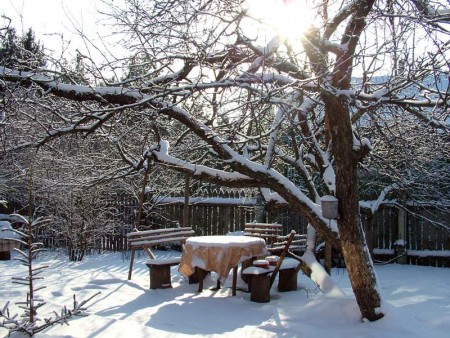
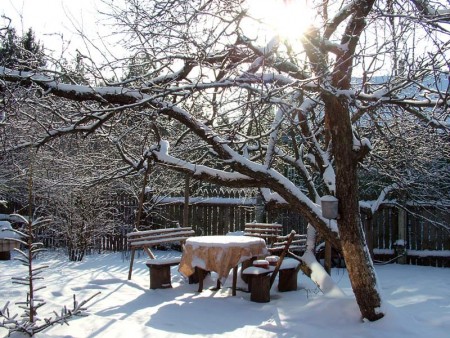
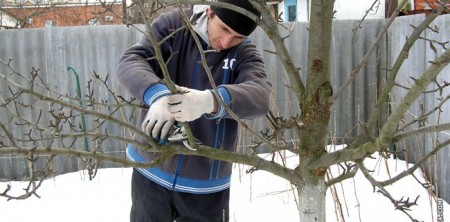

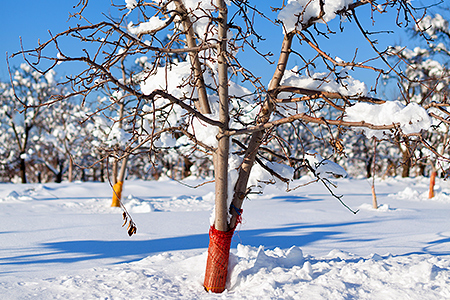
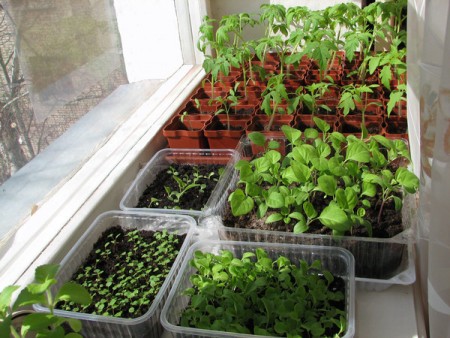

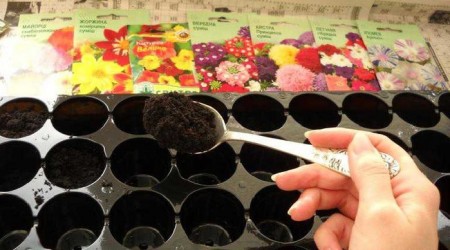
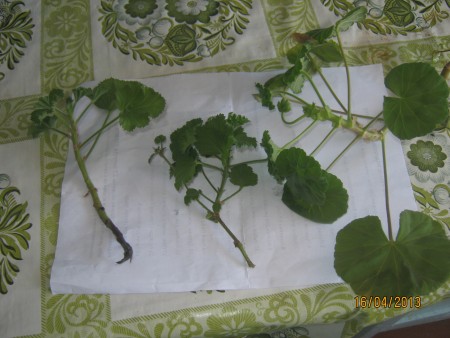

 (23 ratings, average: 4,65 out of 5)
(23 ratings, average: 4,65 out of 5) CUCUMBERS NEVER GET SICK, I'VE BEEN USING ONLY THIS FOR 40 YEARS! I SHARE A SECRET WITH YOU, CUCUMBERS ARE LIKE THE PICTURE!
CUCUMBERS NEVER GET SICK, I'VE BEEN USING ONLY THIS FOR 40 YEARS! I SHARE A SECRET WITH YOU, CUCUMBERS ARE LIKE THE PICTURE! You can dig a bucket of potatoes from each bush. Do you think these are fairy tales? Watch the video
You can dig a bucket of potatoes from each bush. Do you think these are fairy tales? Watch the video
 How our fellow gardeners work in Korea. There is a lot to learn and just fun to watch.
How our fellow gardeners work in Korea. There is a lot to learn and just fun to watch. Eye trainer. The author claims that with daily viewing, vision is restored. They don't charge money for views.
Eye trainer. The author claims that with daily viewing, vision is restored. They don't charge money for views. A 3-ingredient cake recipe in 30 minutes is better than Napoleon. Simple and very tasty.
A 3-ingredient cake recipe in 30 minutes is better than Napoleon. Simple and very tasty. Therapeutic exercises for cervical osteochondrosis. A complete set of exercises.
Therapeutic exercises for cervical osteochondrosis. A complete set of exercises. Which indoor plants match your zodiac sign?
Which indoor plants match your zodiac sign? What about them? Excursion to German dachas.
What about them? Excursion to German dachas.